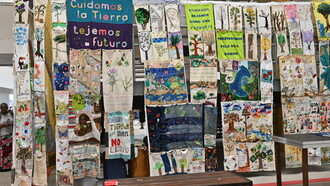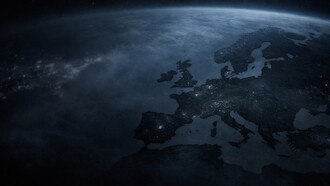The Arctic consists of Canada, Russia, Greenland, United States (Alaska) and Norway where each particular petroleum company is based. The multinational oil companies existent there face health and safety issues because of the extremity of those climates in the world. The purpose of their existence is to drill and explore in regions where drastic melting of glaciers and ice makes it simpler to do so as a result of global warming.
Many scientists and curiosity seekers ponder whether the continuous exploration of oil and gas into the arctic will allow developing countries to become more advanced while safety mechanisms are put into place. On the other hand, in developing countries the question remains, is there a need for more energy to evolve in terms of technology and science when there are other natural resources? Many scientists argue that as the possibility of extracting oil in traditional fields has decreased, there is a necessity to search for new sources of petroleum in other global areas such as the Arctic.
Petroleum is used to make products from aspirins and toothpaste to CDs, as well as gasoline. Crude oil is made mainly of hydrocarbons. These are compounds made only of hydrogen and carbon, such as methane. Petroleum is separated by distillation into various substances such as aviation fuel, gasoline and paraffin. As oil is heated in a distillation column, a mixture of gases evaporates. Each gas cools and condenses at different heights to a liquid, or fraction, which is then drawn off.
Most emerging nations have plentiful renewable energy resources, comprising of solar energy, wind power, geothermal energy and biomass. Additionally, they have the ability to manufacture the relatively labor-intensive systems that harness these. By developing such energy sources developing countries can decrease their dependence on oil and natural gas, creating energy portfolios that are not as much vulnerable to price rises. In many conditions, these investments can be less expensive than fossil fuel energy systems. However, it has been stated that alternative resources do not produce more energy than oil does. In 2012, one of NASA’s ice experts, Dr. Walt Meier declared:
“This year will without a doubt rank in the top five lowest levels of ice extent ever recorded in the satellite era and there is a good possibility that 2013 could rank second in terms of recorded ice lows”, as a scientist at the National Snow & Ice Data Center. According to the Climate Depot, earth gained a record amount of sea ice in 2013 — Earth has gained 19,000 Manhattans of sea ice since September 2012 last year which is the largest escalation on record.
Over the last decade a small number of comprehensive assessments of undiscovered petroleum resources in the Arctic have been carried out with to a certain extent different results. Wood Mackenzie (2006) assessed the undiscovered reserves in the arctic regions and questioned the perception of the Arctic as one of the last great oil and gas frontiers (Oil & Gas Journal, 2006). The study established that total arctic undiscovered petroleum resources were only around 43 per cent of the estimates in USGS (2000). For oil, the study concluded that expected undiscovered resources for North American Arctic and Greenland were merely a quarter of earlier estimates made by USGS in 2000.
On the other hand, Wood Mackenzie raised up the estimates for natural gas in the Arctic West Russia compared with the USGS 2000 assessment. The petroleum supply from the arctic region as a whole would, according to Wood Mackenzie, peak around 2030 at 8 million barrels of oil equivalents per day (boe/d). Additionally, it would be with 40 per cent oil and 60 per cent gas in the most likely scenarios, as a greater share of gas would essentially involve remote gas too expensive to transport to markets according to the Wood Mackenzie assessment. Wood Mackenzie decided that the undiscovered resources are mainly located in either ice-free or seasonal ice-free areas, which call for modifications of technology only – not new solutions. Subsea drilling is to be expected to be utilized for the grander share of the offshore resources.
In 2008, the USGS completed their Circum-Arctic Resource Appraisal (CARA), assessing the undiscovered petroleum resources north of the Arctic Circle in more detail (USGS, 2008). The study used a probability-geology based methodology covering sediments expected to have more than 10 per cent probability of having one or more significant oil or gas resources, i. e. fields containing more than 50 mill boe. These resources were assumed to be recoverable without explicit economic considerations; however, implicitly the size of fields accounted for indicates economic viability. The study did not consider the specific challenges associated with the ice cover and excluded resources where production would have to rely on technology that was not yet available.
Around 80 per cent of the resources were found offshore, but relatively shallow under less than 500 meters of water (Gautier et al, 2009). Undiscovered petroleum resources were estimated by USGS (2008) to be 8.5 per cent higher than their 2000 estimate, leaving the Wood Mackenzie (2006) estimate at only around 40 per cent of the new USGS resource estimate. The 2008 assessment reduced oil resource estimates and increased gas resource estimates compared with the USGS 2000 assessment. Estimates of oil resources in Norway, Greenland and Russia were lowered and raised in Alaska and Canada. Gas resource estimates were lowered in Norway and increased in all the other regions.
Still, after a 50 per cent downward adjustment, Greenland oil resources were estimated to 18 per cent of total arctic oil resources. As a reminder, note however that the methods used in the USGS (2000) and USGS (2008) assessments differ, hence the results are not directly comparable. According to USGS (2008), the total amount of undiscovered petroleum resources in the Arctic is 413 bboe, about 22 per cent of the global undiscovered conventional oil and gas resources. Further, they find that the Arctic contains 134 bboe of oil (including natural gas liquids, NGL) or about 15 per cent of total global oil resources. Henceforth, 279 bboe or close to 70 per cent of the arctic petroleum is gas.
How much of the globe’s oil and gas resources have already been revealed and what is the prospective for future discoveries? Confirmed reserves are defined as completely identified and economically viable resources. The USGS 2000 approximation of global undiscovered oil and gas resources is based on geological information and makes up around 90 per cent of what is defined as global proven reserves in BP (2010). There is great uncertainty related with resource estimates in the Arctic, where substantial shares of the resources are under the sea bed and exploration drilling is expensive.















